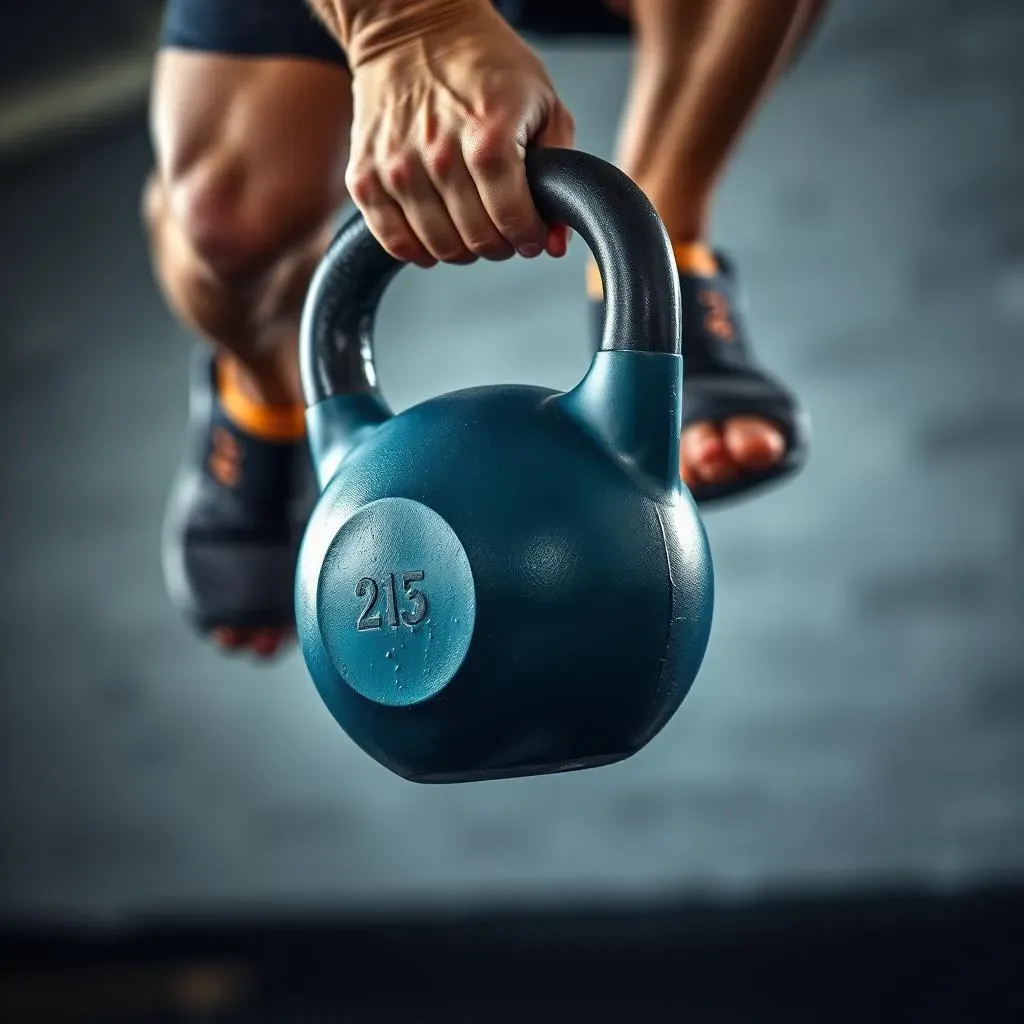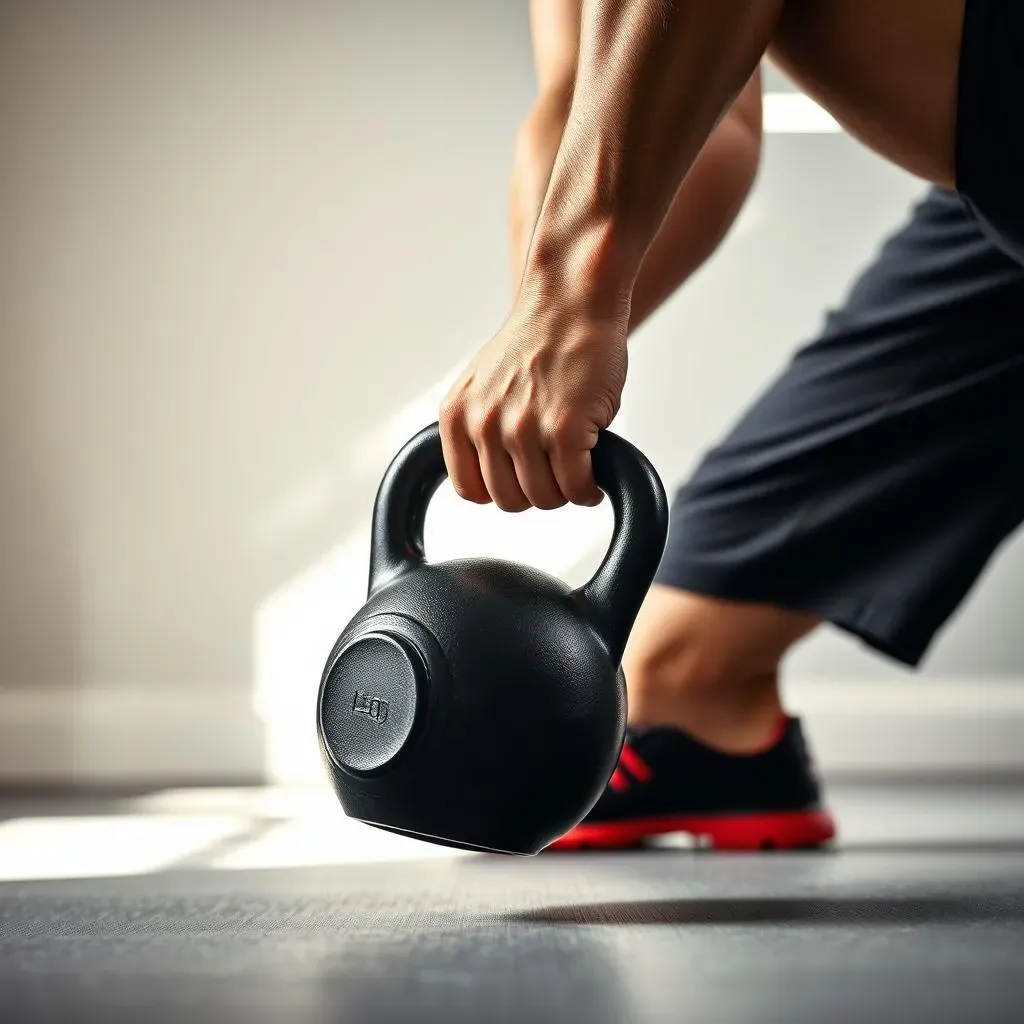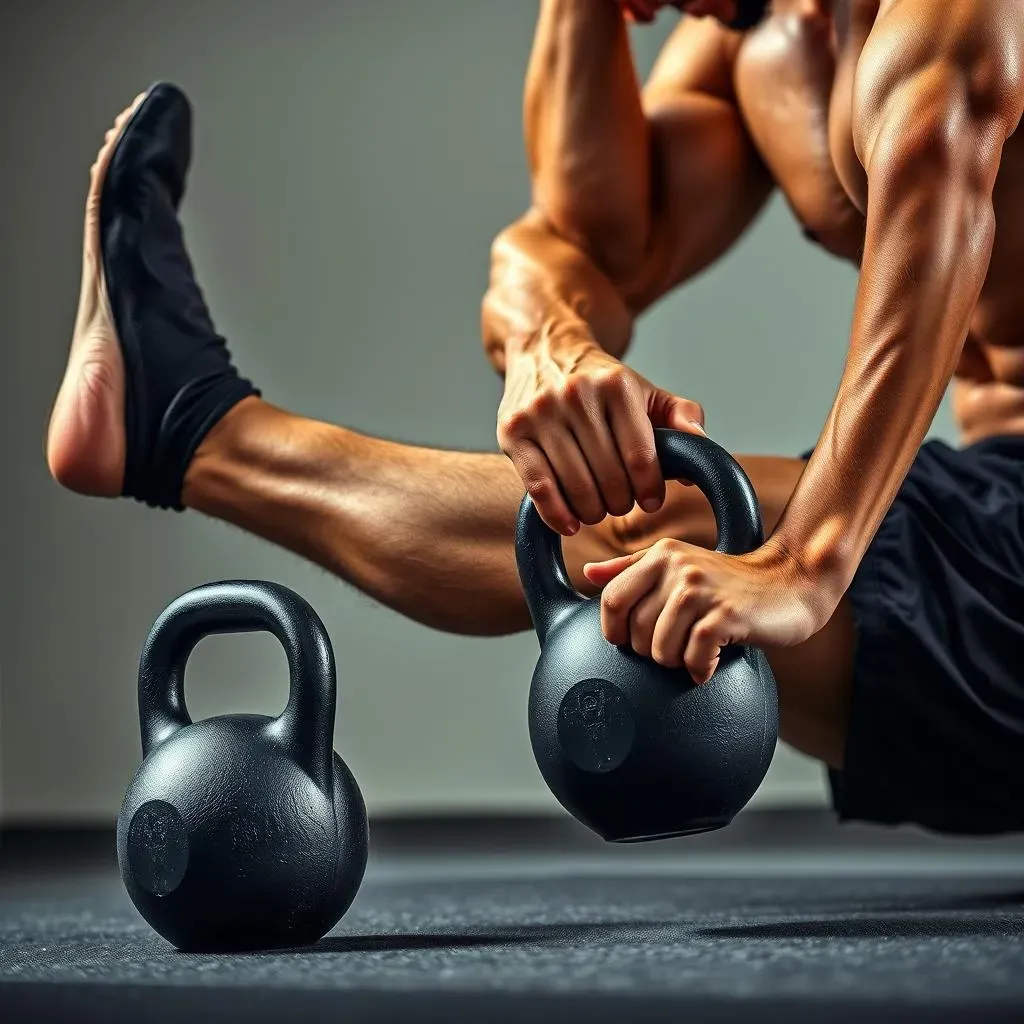Table of Contents
Ready to fire up your hamstrings and build serious leg strength? Forget those bulky machines – the kettlebell leg curl is here to revolutionize your lower body workout. This isn't just another leg exercise; it's a powerhouse move that targets your hamstrings with laser focus, all while improving your balance and stability.
Why You Should Add the Kettlebell Leg Curl to Your Workout

Why You Should Add the Kettlebell Leg Curl to Your Workout
let's get real. Why should you even bother with the kettlebell leg curl? Because it's a game-changer, that's why. Most leg workouts are quad-dominant, leaving your hamstrings playing second fiddle. But strong hamstrings aren't just about aesthetics; they're crucial for knee stability, injury prevention, and explosive power. The kettlebell leg curl directly targets these often-neglected muscles, helping you build a balanced, resilient lower body. Plus, it's a fantastic way to challenge your core and improve your balance, making it a win-win for overall fitness.
Think about it: running, jumping, squatting – your hamstrings are involved in almost every lower body movement. Neglecting them is like driving a high-performance car with worn-out tires. You might get by for a while, but eventually, something's gonna give. The kettlebell leg curl helps you bulletproof your hamstrings, ensuring they're ready to handle whatever life throws your way.
Mastering the Kettlebell Leg Curl: StepbyStep Guide

Mastering the Kettlebell Leg Curl: StepbyStep Guide
Step 1: The Setup
Alright, let's get down to business. The kettlebell leg curl isn't about just flopping around; it's about control and precision. First, you'll need a kettlebell – start with a lighter weight until you nail the form. Lie face down on a mat or a soft surface. Now, here's the trick: position the kettlebell between your feet. You might need to use your hands to secure it in place. Make sure it's snug but not uncomfortably tight.
Next, get your mind right. This exercise requires focus. Engage your core, squeeze your glutes, and prepare to lift. Think about pulling the kettlebell towards your glutes using your hamstrings. Don't just swing it up; control the movement.
Step 2: The Curl
the setup is dialed in, now it's time for the curl. Slowly contract your hamstrings to lift the kettlebell off the ground, bringing it as close to your glutes as possible. Focus on squeezing your hamstrings at the peak of the movement. Hold that contraction for a second or two to really feel the burn.
Remember, it's not about how high you can lift the kettlebell; it's about how well you can control the movement. Avoid arching your back or using momentum to swing the weight up. Keep your core engaged and your hips pressed into the mat throughout the exercise.
Step 3: The Descent
You've curled the weight up, now what? Don't just let it drop! This is where the real magic happens. Slowly lower the kettlebell back to the starting position, resisting the urge to let it slam onto the ground. Control the descent, feeling the stretch in your hamstrings as you lower the weight.
Repeat this process for the desired number of repetitions. Start with 8-12 reps per set and gradually increase the weight or repetitions as you get stronger. Remember to listen to your body and stop if you feel any pain. And that's it! You've mastered the kettlebell leg curl. Now go out there and build some serious hamstring strength.
Step | Action | Focus |
|---|---|---|
1 | Setup | Secure kettlebell, engage core |
2 | Curl | Contract hamstrings, squeeze at peak |
3 | Descent | Control lowering, feel the stretch |
Kettlebell Leg Curl Variations: Level Up Your Hamstring Training

Kettlebell Leg Curl Variations: Level Up Your Hamstring Training
Single Leg Kettlebell Curl: The Balance Booster
Ready for a real challenge? The single leg kettlebell curl takes everything you love about the standard version and cranks up the intensity. By working one leg at a time, you not only target your hamstrings but also force your core to work overtime to stabilize your body. This variation is fantastic for improving balance, coordination, and addressing any strength imbalances between your legs.
To perform the single leg kettlebell curl, simply follow the same steps as the standard version, but lift only one leg at a time. You might need to reduce the weight initially, as this variation is significantly more challenging. Focus on maintaining a stable core and avoiding any excessive twisting or wobbling. Start with 6-10 reps per leg and gradually increase the repetitions as you get stronger.
Banded Kettlebell Leg Curl: Adding Resistance
Want to add an extra layer of intensity to your kettlebell leg curl? Try incorporating a resistance band. This variation provides constant tension throughout the entire range of motion, forcing your hamstrings to work even harder. It's like adding a turbocharger to your leg day!
To set up the banded kettlebell leg curl, simply loop a resistance band around your ankles, positioning the kettlebell between your feet as usual. As you curl the weight up, the band will provide additional resistance, making the exercise more challenging. Focus on controlling the movement and avoiding any sudden jerks or snaps. Start with a light resistance band and gradually increase the tension as you get stronger. This variation is killer for building strength and endurance in your hamstrings.
Glute Bridge Kettlebell Leg Curl: The Posterior Chain Powerhouse
This variation combines the benefits of a glute bridge with the hamstring activation of a kettlebell leg curl. By elevating your hips off the ground, you engage your glutes and core even further, creating a powerhouse exercise for your entire posterior chain. It's a fantastic way to build strength, stability, and power in your lower body.
To perform the glute bridge kettlebell leg curl, lie on your back with your knees bent and feet flat on the ground. Position the kettlebell between your feet and lift your hips off the ground, forming a straight line from your shoulders to your knees. From this position, perform the kettlebell leg curl as usual, focusing on squeezing your hamstrings and glutes at the peak of the movement. Lower the weight and your hips back to the starting position, and repeat for the desired number of repetitions. This variation is a total game-changer for building a strong, sculpted lower body.
Variation | Focus | Benefits |
|---|---|---|
Single Leg Curl | Balance, stability | Improves coordination, addresses imbalances |
Banded Curl | Constant tension | Increases strength and endurance |
Glute Bridge Curl | Posterior chain | Engages glutes, core, and hamstrings |
Common Mistakes to Avoid When Performing Kettlebell Leg Curls

Common Mistakes to Avoid When Performing Kettlebell Leg Curls
Using Momentum Instead of Muscle
One of the biggest mistakes people make with the kettlebell leg curl is relying on momentum to swing the weight up. This not only reduces the effectiveness of the exercise but also increases the risk of injury. Remember, the goal is to isolate your hamstrings and control the movement throughout the entire range of motion.
Instead of yanking the kettlebell up, focus on consciously contracting your hamstrings to lift the weight. Imagine squeezing your hamstrings at the peak of the movement and slowly lowering the weight back down. This will ensure that you're actually working your muscles, not just flailing around.
Arching Your Back
Another common mistake is arching your back during the exercise. This puts unnecessary stress on your spine and can lead to lower back pain. To avoid this, engage your core muscles throughout the entire movement. Think about pulling your belly button towards your spine and maintaining a neutral spine position.
If you find yourself arching your back, it might be a sign that the weight is too heavy. Reduce the weight and focus on maintaining proper form. It's better to do fewer reps with good form than to struggle through more reps with bad form.
Using Too Much Weight Too Soon
Eager to see results? Of course! But don't let that eagerness lead you to using too much weight too soon. Starting with a weight that's too heavy can compromise your form and increase your risk of injury. It's always better to start light and gradually increase the weight as you get stronger.
Begin with a weight that allows you to perform the exercise with proper form for 8-12 repetitions. As you get stronger, gradually increase the weight in small increments. Remember, consistency and proper form are key to building strength and avoiding injuries.
Mistake | Solution | Benefit |
|---|---|---|
Using momentum | Focus on muscle contraction | Effective hamstring isolation |
Arching back | Engage core, reduce weight | Spinal stability, injury prevention |
Too much weight | Start light, gradual increase | Proper form, consistent progress |
Benefits of Kettlebell Leg Curls and Alternatives for Leg Day

Benefits of Kettlebell Leg Curls and Alternatives for Leg Day
Why Kettlebell Leg Curls Are a Must-Try
Let's talk benefits, because that's what really matters, right? Kettlebell leg curls aren't just about building bigger hamstrings; they offer a whole host of advantages that can improve your overall fitness. For starters, they're a fantastic way to enhance your athletic performance. Strong hamstrings translate to faster sprints, higher jumps, and more powerful squats. They also play a crucial role in preventing knee injuries, which is a huge win for anyone who's active.
Beyond the physical benefits, kettlebell leg curls can also improve your balance and coordination. The exercise requires you to stabilize your body while lifting the weight, which engages your core and strengthens your stabilizer muscles. This can translate to better balance in everyday life and improved performance in other exercises. Plus, let's be honest, they just look cool. There's something satisfying about mastering a challenging exercise that most people have never even heard of!
Mix It Up: Leg Day Alternatives for Variety
kettlebell leg curls are awesome, but variety is the spice of life, right? Doing the same exercise day in and day out can lead to boredom and plateaus. That's why it's important to have some alternatives in your back pocket. Good Mornings are a great option for targeting your hamstrings and glutes, while also improving your hip hinge. Nordic Hamstring Curls are another killer exercise that requires no equipment and can be done virtually anywhere. Just be warned, they're tough!
If you're looking for something a little less intense, try Glute Bridges or Hip Thrusts. These exercises are great for building glute strength and can also help to activate your hamstrings. You can also incorporate variations like single leg glute bridges or banded hip thrusts to add an extra challenge. Remember, the key is to find exercises that you enjoy and that challenge your muscles in different ways. This will help you stay motivated and continue to see progress over time. So, don't be afraid to experiment and find what works best for you!
Exercise | Focus | Benefits |
|---|---|---|
Good Mornings | Hamstrings, glutes | Improves hip hinge, posterior chain strength |
Nordic Hamstring Curls | Hamstrings | Equipment-free, intense hamstring activation |
Glute Bridges | Glutes, hamstrings | Builds glute strength, easy to modify |
Conclusion: Embrace the Kettlebell Leg Curl for Stronger, Healthier Hamstrings
The kettlebell leg curl offers a unique and effective way to target your hamstrings, improve stability, and build overall lower body strength. By incorporating this exercise into your routine, focusing on proper form, and exploring different variations, you can unlock a new level of hamstring development. So, grab a kettlebell, challenge yourself, and experience the power of the kettlebell leg curl!